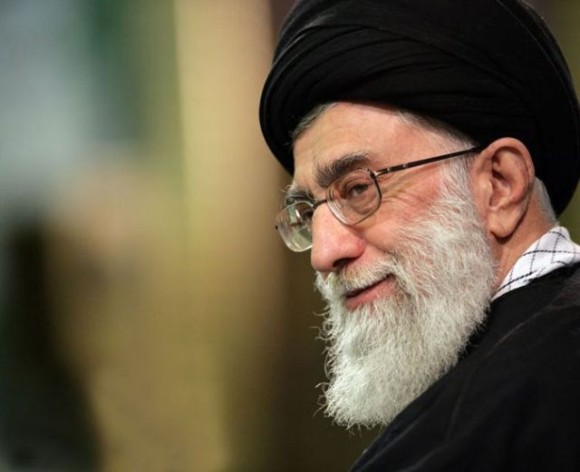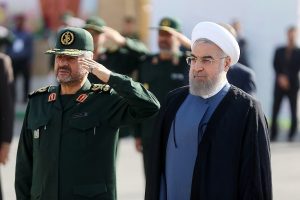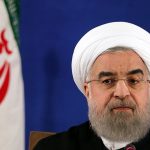by Shireen Hunter
The Shias of Yemen, who now control the capital city of Sanaa, are threatening to take political power by force if negotiations for a power-sharing agreement fail. These advances by the Zaidi Shias—variously known as the Houtis after the name of their first leader Hussein Badreddin Al Houti, or Ansar Ullah, as they prefer to be called—have again raised the specter of a so-called Shia Crescent.
This time, however, the fear of a Shia Crescent has been accompanied by talk of a rising Iranian Empire, based on the assumption that Iran controls the Shias throughout the world. For example, some commentators have mentioned that Iran now controls four capitals in the Middle East: Baghdad, Beirut, Damascus, and now Sanaa.
In addition to the fact that Iran is not in control of these capitals, such comments display a stunning ignorance of Shiism and its various sects. Similarly, such commentators do not seem to be aware that politics in places with substantial Shia populations are not primarily determined by religious factors. Ethnicity, language, and issues of power and influence play much more important roles.
The Origins of Shiism
Shiism is not a heresy within Islam. Rather it is a different narrative about the events that took place after the death of the Prophet of Islam in 632 AD. Unlike, for example, the basic breach that happened in Western Christianity with Martin Luther’s Reformation, the beginnings of Shiism date back almost to the day after the Prophet’s death, at a time when there was no established Islamic orthodoxy.
The controversy began over the successor to the Prophet. Those who believed that the Prophet had appointed his cousin and son-in-law, Ali Ibn Abou Taleb, as his successor came to be known as Shiat ul Ali, meaning the supporters of Ali—hence the appellation Shia. At that time, the term Shia had no theological or doctrinal significance. It simply meant the supporters of Ali’s succession. As it turned out, those who opposed his succession eventually won, including Ayesha, the Prophet’s favorite wife and the daughter of Abu Bakr, who became the first Caliph. In other words, Arab tribal politics won over the Prophet’s wish and Ali’s superior qualities. At least this is what the Shias believe.
However, Ali’s loss in the battle over the Prophet’s succession did not end support for him and his descendants. On the contrary, the attraction of the House of Ali increased, particularly among non-Arab converts as the Arab-Islamic Empire expanded, corruption grew (particularly after Caliph Omar), and many Muslims began to forget the lofty principles of Islam, including equality among all Muslims without any distinction for race or ethnicity. The Iranians were among these converts.
The Islamic Caliphate reached a particularly high level of corruption and dilution of Islamic principles during the time of the Umayyad dynasty (661-750 AD), especially under Yazid Ibn Muawiah. This development increased interest in the House of Ali even among Arab Muslims. At this time some of the supporters of the House of Ali invited Ali’s son Hussein to Kufa in present-day Iraq to challenge Yazid. Hussein’s journey from Medina to Iraq culminated in the drama of Karbala and Hussein’s martyrdom in 683 AD. Yazid won the battle, but ultimately the Ummayeds lost the war. Shortly after Hussein’s martyrdom, revolts broke out against the Ummayeds.
Further Splits
As fate would have it, the end of the Ummayeds did not result in the Caliphate’s transfer to the descendants of Ali. Rather, the descendants of the youngest uncle of the Prophet, Abbas Ibn Abdul Mutallib, were the winners and established the Abbasid Caliphate. Despite their kinship with the Alids, the Abbasids mistreated Ali’s descendants and the Shias.
Until the sixth Shia Imam known as Al Sadiq—the honest one—established a firm line of descent from the third Imam, Ali’s son Hussein, the question of succession remained open and hence a source of conflict. For example, Zaid Ibn Ali, the son of the fourth Imam Ali Ibn Hussein, declared himself Imam and his followers came to be known as Zaidis. There were Zaidis in Iran, especially in its northern provinces, but they have now completely disappeared. Iran’s connection with Yemen and the Zaidis also historically has not been close. Iran only became interested in Yemen after Egyptian President Gamal Abdul Nasser invaded the country and deposed the country’s Zaidi Imam. Both Saudi Arabia and Iran supported the forces of the Imam, out of fear of Arab socialism and nationalism.
The next big split occurred after the death of Imam Jaffar Al Sadiq. The Twelvers consider his son, known as Al Kazim – the calm one—as the rightful Imam, while the Ismaelis look to his other son, Ismael. Unlike the Twelvers, who believe that a “hidden” Imam will come back as the Mahdi, both Zaidis and Ismaelis believe in a living Imam. In the case of the Ismaelis, this now is Karim Agha Khan. Although the current Agha Khan’s family originally hails from Iran, and some Ismaelis still live in Iran, relations between the Ismaelis and the Twelvers are not very good. Certainly, the Islamic government of Iran does not approve of the Agha Khan’s modernist and tolerant version of Islam. In fact, when the Shias in Afghanistan came under attack during the reign of the Taliban, the late Prince Sadr Eddin Agha Khan expressed concern to the author that the Taliban threat was drawing the Ismaelis closer to the Twelvers.
After the Safavids (1501-1735 AD), an ardent Twelver Shia dynasty, reunified Iran, Twelver Shiism became the dominant faith in Iran. The Safavids also built most of the shrines of the Shia Imams in Iraq. Similarly, over several centuries many Iranians settled in Iraq’s holy cities, and most of Najaf’s prominent scholars hailed from Iran. Under the Safavids, Iran’s relationship with the Lebanese Shias became closer, as many Lebanese Shia scholars went to the Safavid court and established the basis of Iran’s Shia clerical establishment.
As with other religions, Shiism developed offshoots, some of which in terms of doctrine and belief have nothing in common with Orthodox Shiism. These include Turkey’s Alevis, the Alawites of Syria, the Al ul Haq in Iran, and various mystical sects. The relationship of these sects with orthodox Shias, especially the clerical establishment, has always been problematic. Rapprochement, where it has happened, has been motivated by politics. For example, Lebanese politics prompted Imam Musa Sadr to declare that the Alawites are Shias.
Because of their minority status in their own countries, many Twelver Shias have historically looked to Iran for spiritual if not material support, irrespective of who ruled Iran. This was true even at the time of the late Shah. However, the common bond of Shiism has never been able to blunt, at least not completely, other ethnic and linguistic differences. Other religions, including Sunni Islam, have failed to overcome similar challenges.
Iran’s Leadership?
Shia unity under Iran’s leadership becomes even more problematic where Shias acquire power, either at the local or the national level. For example, the impetus to Shia enfranchisement in Lebanon came long before the Iranian revolution and the creation of Hezbollah.
The Shias in Lebanon were at the bottom of the economic and social scale. This was partly due to the corruption of their own big landowning families, but it was also because of the dominance of the Maronite Christians and then the Sunnis. Iran or no Iran, this situation could not have continued forever. In the 1960s and 1970s most Lebanese Shia intellectuals belonged to the Communist or other leftist parties, reflecting their sense of alienation from the existing social and political structure. This was also the case in Iraq. This is one reason why the eminent Shia scholar, Imam Muhammad Baqir Al Sadr, developed his Islamic alternative to Communism in works on Islamic economy, Islamic philosophy, and Islamic government. A similar situation existed in Turkey, where many of the Alevis belonged to leftist parties. Today, the Alevis, many of whom are of Kurdish ethnicity, are the most secular of Turks and are frightened of President Recep Tayyip Erdo?an’s mixture of Sunni Islamism and Turkish nationalism. They have very little in common with Iran’s Islamist elite.
In Yemen, the Shia’s goal is to gain what they consider to be their basic rights. Here, again, Iran did not instigate a Shia movement. Furthermore, the Yemenis, who were forced to surrender part of their lands to the Saudis, resent Saudi overlordship. The Saudis have bought the loyalty of various Yemeni tribes and have tried over the years to keep them disunited, so as better to control them. Yemen is a relatively big and populous country whose oil boom in the past had the potential to boost its economic profile. Before its recent troubles, it was an up-and-coming country. Yet the Saudis dislike any country in the region that can be a potential rival.
Impetus to Shia Unity
Since the 1990s, with the spread of virulently anti-Shia Wahhabi Islam to Pakistan and the rise of the Taliban, the Shias came under systematic attacks. In 1998, for instance, the Taliban massacred 8,000 Shia Hazaras. As a result, there has been a greater sense of Shia commonality and need for unity. Later events in Iraq, Syria, and Bahrain—plus rising anti-Shia sentiments in Egypt, the Maghreb, and Turkey— have increased the Shia sense of beleaguerment.
Yet Iran has done nothing to foster this sense of unity and bring the Shias under its control. Iran has influence in places like Iraq and Lebanon, but influence is different from control. Moreover, part of the reason for Iran’s influence has been the anti-Shia policies of some Arab states. For example, the fact that the Sunni Arabs shunned Iraq’s Shia government contributed to enhancing Iran’s influence. Even now, however, the competitive aspects of the relationship are important. Iran has also failed to retaliate against the systematic killing of the Shias in Pakistan even as the government has refused to prosecute the attackers and the rest of the world has ignored the plight of the victims. Iran has remained helpless in the face of the brutal suppression of the Shias in Bahrain and the Saudi military intervention there. Meanwhile, Iran and its Supreme Leader consistently emphasize Islamic unity and advocate closer Sunni-Shia relations, sometimes to the irritation of some Shias, while doctrinal and other differences persist among the Shias themselves, including among the Twelvers.
In short, it’s absurd to talk of a Shia International, and certainly no Shia Comintern exists under Iranian leadership. The demonization of the Shias in recent years and now talk of a Perso-Shia Empire have been for specific political ends, including finding a diversion from the Palestinian problem and cementing an anti-Iran coalition of Sunnis and Israel. But this strategy has not made the Palestinian conflict disappear. It has only given us the Islamic State and a host of al-Qaeda franchises.
Photo of Ali Khamenei, supreme leader of Iran.






In one article I have learned more about this topic than all of the superficial articles of dominant media outlets. In fact I’ll have to read and reread this article to reverse some of the damage the utter ignorance of those stereotype-filled piles of gibberish has done to my brain. Thank you, Professor Hunter. After reading this article I had an epiphany. The reason the dominant media is so hopelessly filled with so much disinformation is partially ignorance. They don’t always misinform intentionally. They do it because they know so little. They have opinions but lack detailed understanding of these complicated affairs and therefore, to buttress their argument they fill the void of their knowledge with stereotypes since popular stereotypes go down easier and go unchallenged by the reader. You can tell the effect of utilizing those stereotypes by reading the resulting commentary by the readers who nod approvingly with such comments: “In that part of the world people have always been killing each other”, as though in other parts of the world (like Europe or here) we have always been loving each other instead of fighting one war after another. Thus, if we’re droning them they must deserve it! As for controlling four capitals in the Middle East (and oh what capitals they are!) I’d much rather control only one capital (can you spell D.C.?)
Thank you Mrs. Shireen Hunter for the very educational article.
Thank you Mrs. Hunter for this. but I don’t understand what you mean by “failed to retaliate” . and you forgot to condemn those acts which by your opinion needed some retaliation.
Ms. Hinter writes “Meanwhile, Iran and its Supreme Leader consistently emphasize Islamic unity and advocate closer Sunni-Shia relations, sometimes to the irritation of some Shias”……Nothing can be farther from the truth. Sunni Iranian cannot hold high official jobs in Iran, are not permitted to have a mosque in Tehran with 12 Millin Population and many other cities, are not allowed to have Friday Prayers in many cities in Iran. Not only that, in Iranian Tv, Rado and many other official and semi-official venues, Sunni’s revered personalities such as Abobaker, Omar etc are insulted and humiliated frequently . Ms. Hunter should have checked her facts before claiming as such. She could have taken a look at numerous Human Rights Reports on Iran regarding Restriction of warship imposed upon Sunni in Iran etc.
While I endorse most of Mrs Hunters historical comments, I beg to differ with some of her analyses of Iran’s position in the Shiah world today.
Iran enjoyed the potential of being the leader of Shiah in islamic world right through islamic history,but,Iranian religious and political leadership never looked beyond its internal sphere of influence ,which Najaf and Iraq were considered part of it. Iranian Shiah clerics always insisted arrogantly on their interpretation of Shiaism and refused to entertain any other versions or interpretation since the Safavid period.This is true even today, thus the Iranian regime and clerics do not tolerate any Shiah groups even internally,an obvious example being the recent violent encounter with Dervishes and Sophies in Iran.
Recently ,however,the Iranian regime is becoming aware of the great political potential of not only Shiah alliance but also Islamic unity .However, the crushing influence of main stream twelve Imami clerics of Iran does not allow the politically aware sector of the regime make full use of such a strong ready made potential and join the broken segments of the chain ,taking the lead in its hands.
Sooner Iranian regime realises the facts of life in International political arena and make decisions on the basis of realities of international politics, free from narrow minded directives of some grand ayatollahs who know nothing of modern international relations, sooner Iran will occupy its deserved position in the Islamic world and international political network. Iran ,unlike most countries in the area,was not created by some foreign powers with a view to preserve their own interest. Iran is as old as human history and civilisation.The people of Iran carry the civil heritage of one of the oldest civilisations in the world. Soon or late Iran will find the right path to the world political power pyramid.
However, Iranian influence among Lebanese,Syrian,Bahraini, Iraqi,yemani,Pakistani,afghan,……Shiah is undeniable though not fully developed and organised. How could anybody deny the effects of Iranian influence and backing on the rise to power of Hizbollah in Lebanon, while Hizbollah is acknowledging it loud&clear ? How could anybody deny the role Iran is playing in keeping Assad regime in power ? …..
IRAN could exercise a much greater influence not only among Shiah Muslims but among every sect of Islam all over the world if it could ignore the traditional conservative arrogant Iranian Shiah clerics. The future is definitely Iran’s. If helped that will come soon and if hindered it will come later. In any case it is inevitable.